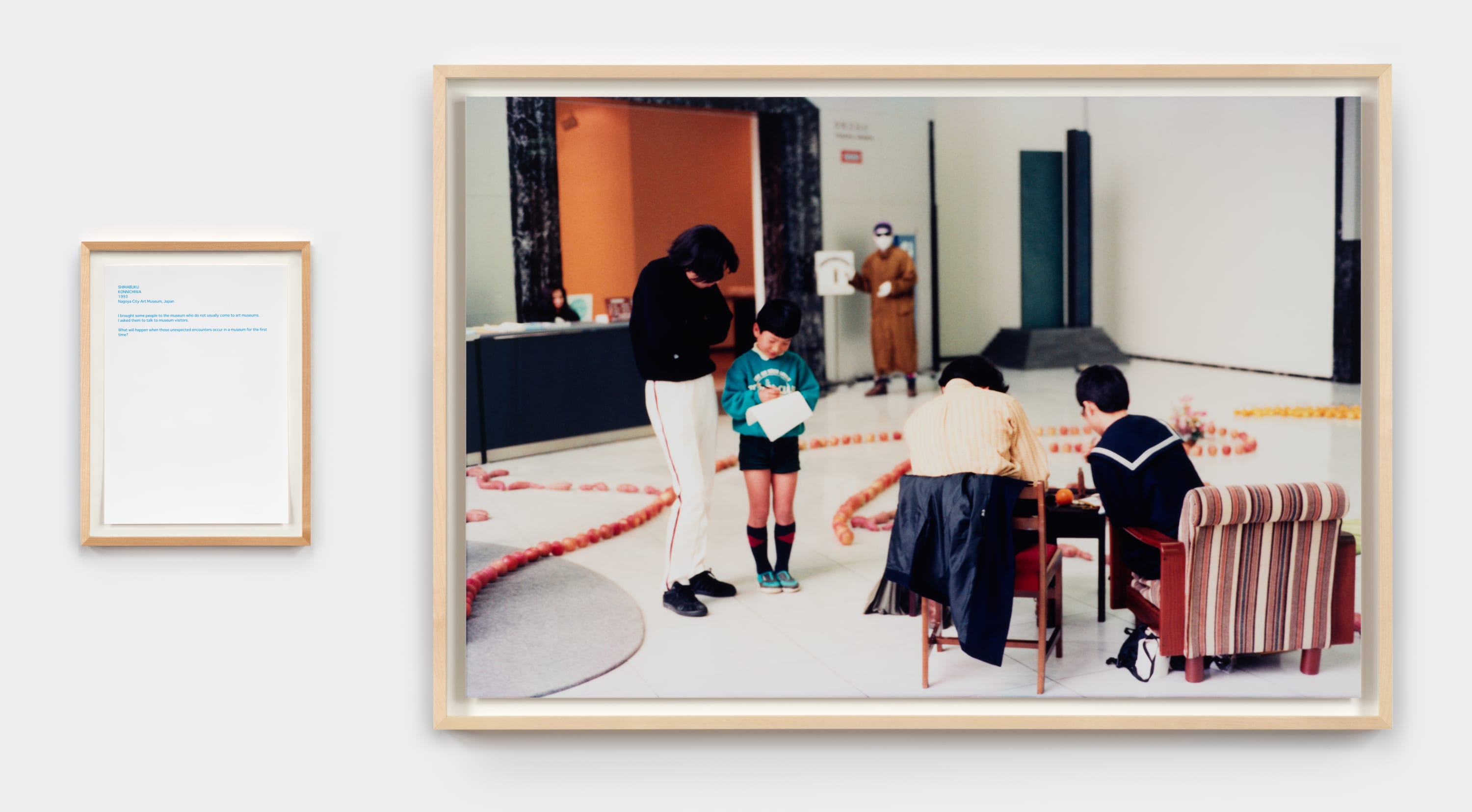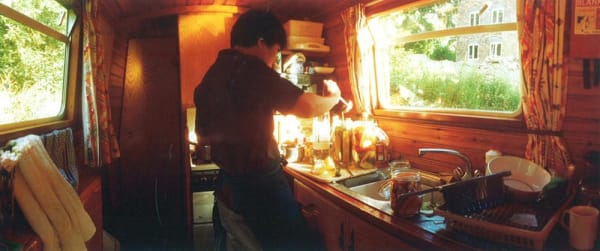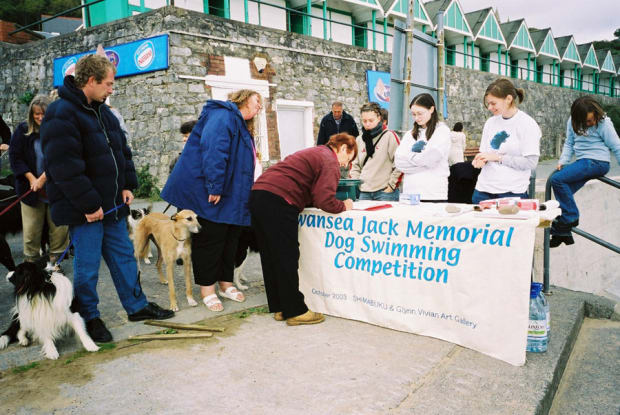Shimabuku's exhibitions draw a landscape in which art no longer occupies a dominant symbolic position: it is a trace among traces, an activity nourished by multiple parallel activities, objects within a world of objects. He creates a space of coactivity between objects, animals and humans: they all work along together, and he carries their voices.
Nicolas Bourriaud, 2015
This first gallery OVR presents Shimabuku, an artist whose work is conversely born out of connectivity and observations in the physical world. At this moment of disconnectivity and on the occasion of the opening of his exhibition at the Nouveau Musée National de Monaco, these works from the early 1990s – 2003 illustrate his poetic reflections and interest in the way we relate to those around us.
-

-

-
 Konnichiwa, 1993
Konnichiwa, 1993I bought some people to the museum who do not usually come to art museums.
I asked them to talk to museum visitors.
What will happen when those unexpected encounters occur in a museum for the first
time?
Shimabuku, 1993
Nagoya City Art Museum, Japan
C-Print103 x 70 cm and A4 TextEdition 2 / 5 + 2AP -

-

-
The train from London to Birmingham takes two hours, but I made the trip by boat in two weeks, on a canal built in the eighteenth century. During this trip, I made pickled vegetables.
The vegetables and cucumbers that I bought fresh in London were pickled by the time I reached Birmingham. When I conceived of this project I didn’t know how to make pickles, but by the end of my trip I had learned something about it and my pickled tomatoes were quite good.
Whilst travelling from London to Birmingham, I gathered recipes for pickles from people I met, and gazed at sheep and water birds as we passed them and stared at leaves floating in the water. And I watched the cucumbers slowly turn into pickles.
An English couple, Geoff and Jean who were travelling with me taught me about the operation of the boat. I learned quite a bit about England while talking to them everyday. Geoff and Jean began by saying ‘Why is making pickles while travelling on a boat art?’ But by the end they said ‘Maybe it is art. Why not call it art?’ Geoff and Jean encouraged me to eat English cooking every day, and made me things like sausages and roast beef for breakfast, lunch and dinner. Gobbling down this food I got fatter than I had ever been before.
A boat trip and pickles : a slow trip and slow food. There are places to which you can only travel slowly, and there are things that can only be made slowly.
Arriving in Birmingham, I gave away the pickles to my friends. The pickles will begin a new journey in peoples bodies.
Shimabuku, 2000
-

-
When I visited a town called Swansea in Wales and walked along the shore, I noticed I came across more dogs than people. Owners were nowhere to be seen, but a few dogs strolled around on their own. They would run towards the waves and suddenly jump into the sea for a quick plunge, then take off again.
The dogs looked so comfortable in the water it made me wonder if Swansea had regularly organised swimming events for dogs, but locals told me no such thing existed. I decided that for a while, I would strike up a conversation with every single person I meet, and talk to them about dogs. Eventually I came upon a story of a dog named Jack.
Jack was born in Swansea in 1930, and over the course of his life span of 7 years, he saved 27 people from drowning. He was never officially trained, but always loved swimming and playing with children on the beach. Jack received plaques and certificates for every life he saved, which are still on display at the city museum. In those days Jack was the town’s hero. Still now, near the edge of the town, there’s a small memorial stone dedicated to Jack.
With the help of a local museum, I organized a ‘Swansea Jack Memorial Dog Swimming Competition’ to help revive memories of Jack.
The rule was simple. Owners throw the dogs favourite toys and dogs jump into the water to fetch them. I record the event and screen it at the museum at a later date. Viewers get to cast their votes for their favourite dog.
There were about 80 dogs on the day of the competition. One by one the dogs swam, while people called their names and cheered on. The dogs must have sensed something, they would swim even harder upon hearing their own names. It was a Sunday afternoon and everyone and their dogs seemed completely at ease. I felt like I just happened to be there to witness and record a dog swimming event that’s been going on for generations. It felt strangely familiar.
It’s something that doesn’t exist yet, but something you believe should exist, so you carry on as if it had always existed. It’s like brushing away a piece of lint that somehow landed right there. Just so. It’s a new yet familiar feeling, like excavating the future.
Shimabuku, 2003
-














